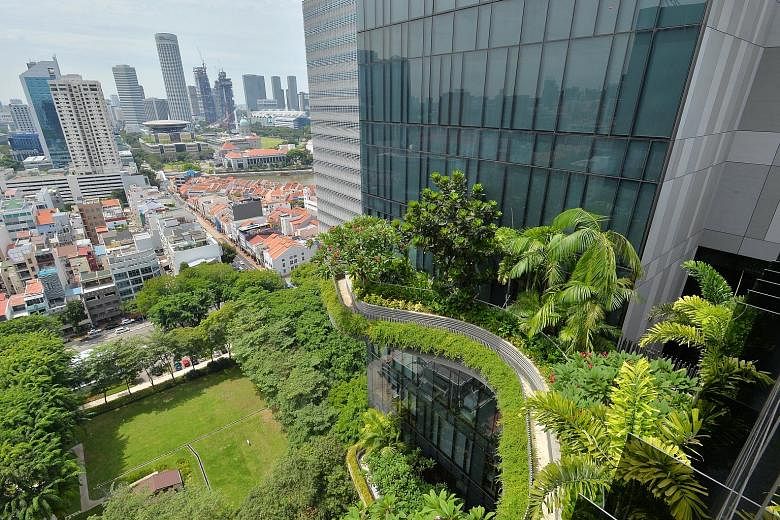The world may have signed a pact to tackle climate change last December, but its effects are still being felt far and wide.
The United Nations Environment Programme (UNEP) estimates that buildings contribute to as much as a third of total global greenhouse gas emissions, mainly due to the use of fossil fuels for energy generation.
In Singapore, the Building and Construction Authority (BCA) says buildings, which refer to offices, shopping malls, hotels, and educational and healthcare institutes, consume more than a third of the nation's electricity.
"Buildings thus present a huge opportunity for tackling climate change, especially by improving energy efficiency in design and reducing energy consumption when operating buildings," said a BCA spokesman.
The UNEP says current technology can cut energy consumption in buildings by up to 80 per cent.
Research and development may reduce this further, and BCA has a suite of initiatives to promote R&D, including the BCA SkyLab, a rotatable laboratory for testing and developing energy-efficient technology.
Experts such as Dr Herbert Dreiseitl, director of the Germany-based Liveable Cities Lab, have also suggested that to protect the country against the effects of climate change - such as heavier rain and prolonged dry spells - more green features can be incorporated in buildings from an earlier stage of the design process.
For instance, water retention tanks could be installed to store rainwater. This would reduce the rainwater flowing into the public drainage system, lessening the chances of flash floods. Stored water can also be used to water plants in the building during a dry spell.
But as new buildings make up only a small part of the building stock, green strategies that can be applied to existing buildings must also be considered, said Professor Thomas Schroepfer, associate head of the architecture and sustainable design school at the Singapore University of Technology and Design (SUTD).
This could involve re-using existing structures, said Prof Schroepfer, who authored Dense + Green: Innovative Building Types For Sustainable Urban Architecture, a book launched by SUTD's Lee Kuan Yew Centre for Innovative Cities last month. "A good local example would be the Rail Corridor and the proposed adaptive reuse of the existing building, the former Tanjong Pagar Railway Station."
The winners of a design competition for the future of the former KTM railway land had repurposed the station as a multi- function community building, which is also expected to include facilities such as a railway gallery, art clubs and cafes. The station's carpark could also become a public park.
As of January, almost 2,600 buildings in Singapore and more than 76 million sq m of gross floor area are certified green by the BCA. This is more than 30 per cent of the Republic's total gross floor area. The Government's goal is to green at least 80 per cent of total gross floor area of buildings here by 2030.
BCA believes Singapore is on track to achieving this through initiatives such as cash incentives to get building owners that retrofit their premises to make them more energy-efficient.
"BCA's three Green Building Masterplans in the last decade had initiatives targeted at new buildings, existing buildings and end-users...to pave the way for us to hit the target," said a spokesman.
"The next step is to innovate and further stretch the energy savings of green building technologies, which is the key focus of the various R&D efforts over the next few years."


